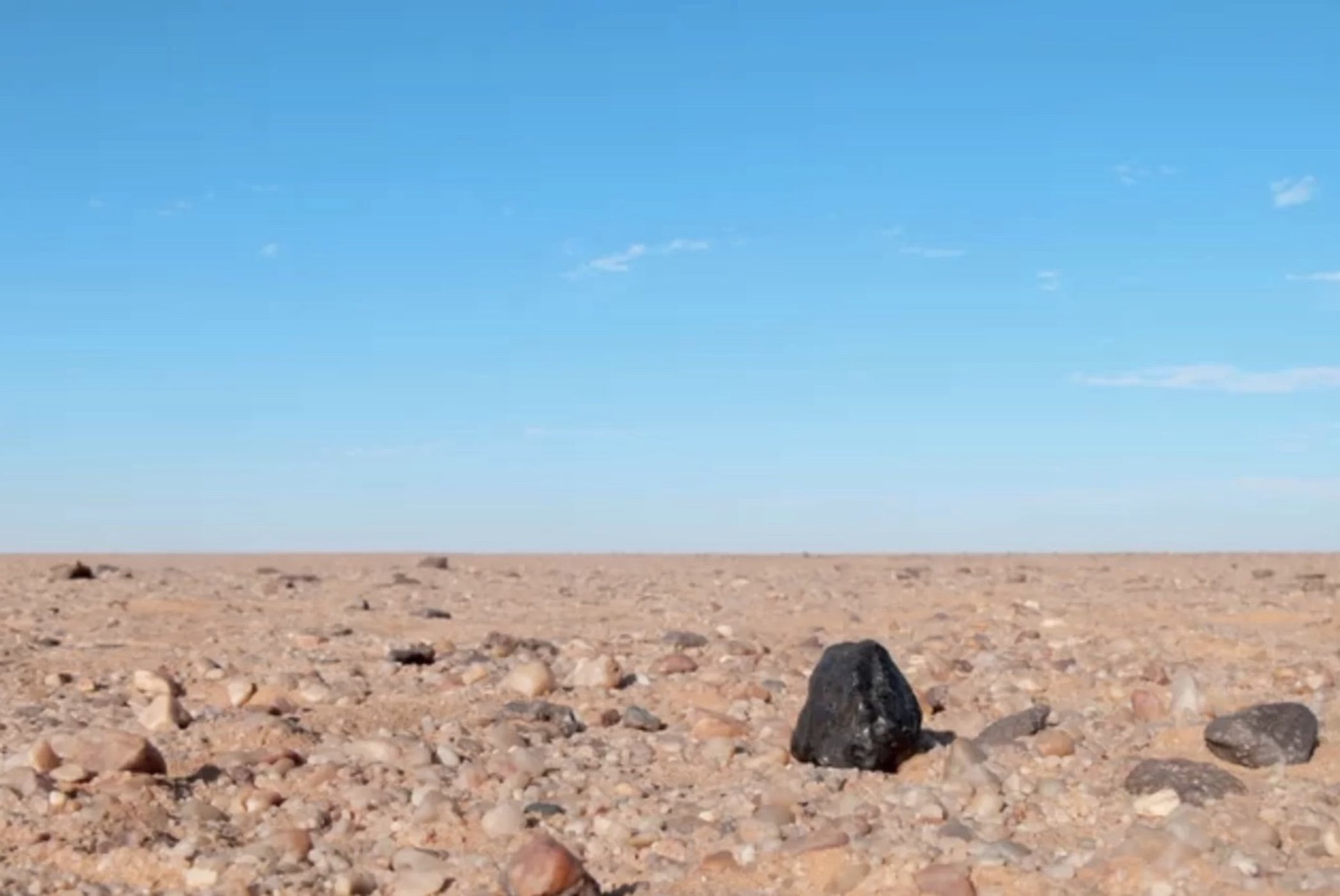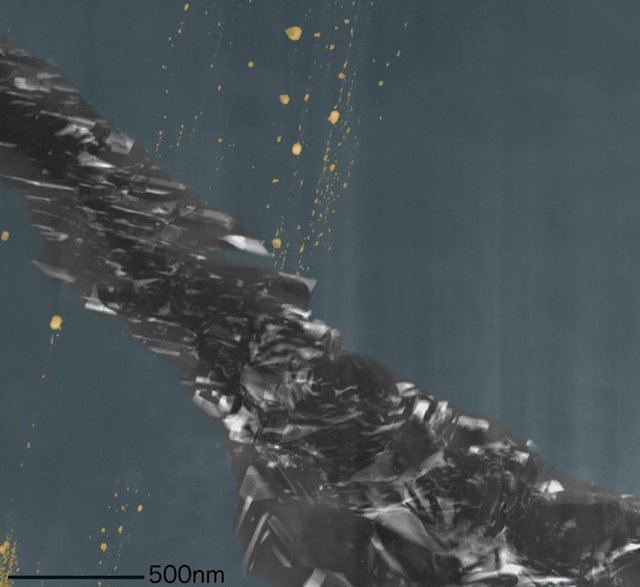 "Black Stone" from the Nubian desert in northern Sudan was part of an ancient planet
"Black Stone" from the Nubian desert in northern Sudan was part of an ancient planetOn October 7, 2008, an asteroid fell in the
Nubian Desert (Sudan), which upon closer examination turned out to be very unusual. He was literally stuffed with miniature diamonds, formed, apparently, billions of years ago. According to scientists, the origin of this asteroid occurred under conditions of enormous pressure and high temperatures. Most likely, it was part of a failed planet, one might say, an embryo, which was not destined to develop into an “adult” state.
However, the size of the "embryo" was rather big - the embryo of the planet was equal in size to Mercury or even Mars. Scientists have figured it out through calculations, as it turned out, diamonds of this size, which were found in an asteroid, can originate only within a fairly large celestial body. Interestingly, the characteristics of asteroid diamonds are close to those of terrestrial diamonds. Scientists have discovered chemical compounds that are typical for terrestrial conditions - chromites, phosphates and iron-nickel sulfides.
According to experts, the results of the study of the asteroid can better understand the conditions prevailing in the solar system 4.4 billion years ago, when future planets began to form around the sun. Some of them have developed into full-fledged celestial bodies, others have disintegrated due to various reasons. Perhaps this is the gravitational influence of other bodies in the solar system; there may have been some kind of collision between “embryos” and other bodies.
Some of the same “embryos” of the planets fell on the Sun or were thrown out of the system into interstellar space.
 Diamond structures found inside the asteroid. Photo taken using an electron microscope
Diamond structures found inside the asteroid. Photo taken using an electron microscopeThe size of the fallen object was 4 meters, its fragments are still found near the crater. They are small, the size of the parts is 1-10 centimeters. The asteroid (or rather, a meteorite, because it fell to Earth) fell near the railway station number 6, and the collection of fragments was called just that “Station six”, only in Arabic.
Scientists believe that the diamonds found in the asteroid, formed precisely in the embryo of the planet. But there are other assumptions. For example, some researchers believe that diamonds, similar to those found in the fragments of an asteroid, can also be formed during collisions of objects in space. The pressure should be at least 20 gigapascals, in terrestrial conditions it can be achieved only in exceptional conditions, with
powerful explosions .
“Such pressure can be achieved in the conditions of the emerging planets, the size of Mercury or Mars, however, it all depends on the layer in which diamonds are formed,” the report says. Well, the destruction of the embryo of the planet can happen when it collides with other objects, other “embryos” or rather large asteroids.
The results of the study were published in
Nature Communications on April 17.
By the way, in Russia they also study meteorites (an asteroid that fell on the Earth is technically a meteorite). Recently, a group of scientists from the Laboratory of Neutron Physics of the Joint Institute for Nuclear Research (FLNP JINR)
conducted a study of a fragment of a rare meteorite. Namely - the Seymchan meteorite. Using neutron tomography, scientists obtained valuable information about the composition and spatial distribution of matter in a meteorite without destroying it.
It belongs to the class of pallasites, one of the most rare and beautiful meteorite varieties. A class was named in honor of the scientist P.S. Pallas, who described the first meteorite of this type found in 1773. Then, by the way, no one believed that this extraterrestrial object, the first to identify the pallasite, as an extraterrestrial object, became E. Hladni in 1794.
Meteorites of any type allow you to get more information about the history of the solar system and its evolution. Knowing all this, scientists can make more realistic predictions about the development of our system and understand what is happening in it now. Knowledge is power, and modern science is gradually gaining this power.